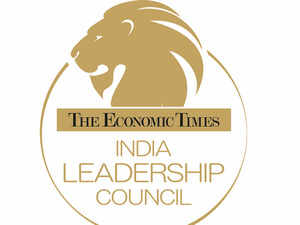
 Agencies
AgenciesMost companies expected that the good run that they had towards the end of calendar year 2020 would continue in 2021. Due to the second wave of the pandemic in India and localized lockdowns, that hope has been called to question. As per IHS Markit India, the Manufacturing PMI stood at a ten-month low of 50.8 in May. But despite the Covid-19 crisis, in the long-run, industry experts are not expecting a big impact on the manufacturing sector. As supply chains are continuously reviewed and aligned and processes are streamlined, large players are certain they will remain unaffected as long as sea freight remains normal.
"By the last Qtr of 2020 CY and 1st Qtr of 2021 CY, availability of sea freight containers was a big issue and lot of blank sailing was seen happening at ports across the globe, this further added to cost and sea freight costs per container increased by more than four times."
MTC, which operates in base metals, ferro alloys, metal manufacturing and is a large demolisher of industrial scale projects says the impact of localized lockdowns has been minimal this year. Even though there were labour shortages as migrant labourers went back home anticipating complete lockdowns, essential industries were able to operate. This kind of impact is starkly different from what happened in 2020, where SMEs especially were cash-strapped.
"After an extended period of lockdown pent up demand built up in the system. Some sectors like automobiles, engineering units and steel manufacturing units performed well in view of global demand despite working for 9 months."
As per McKinsey, so far India’s manufacturing sector has generated low return on capital and attracted little investment. But all that can change. There is a huge opportunity for India if it focuses on 11 manufacturing sectors. There is a potential of generating $300 billion in GDP. The 11 sectors to focus on are: Vehicles and components, capital goods and machine tools, pharmaceuticals, chemicals and allied products, agriculture and food, metals and basic materials, apparel and textiles, furniture, leather and rubber, electronics and semiconductors, aerospace and defense and renewable energy.
"India needs to focus on building blocks and not just assembling the product which we have tended to do in the past. True "atmanirbharta" can come only by addressing the building blocks as far as possible. We discovered this the hard way for our pharma industry during the crisis."
One other big area of change that is required is in the area of digitization. Experts believe that India’s low digitization can be attributed to the high initial investment. That is what serves as a big impediment. As per industry estimates only 3-5% of the industry has gone digital at scale while 30-40% are beginning their journey. Also, labour costs in India are lower and thus there is less incentive to invest in more automation, mechanization and digitization. This is a vicious cycle that feeds itself but this pattern is changing because of the pandemic.
"The core productivity improvement with robotics, 3D printing, additive manufacturing, use of IOT forms the 3rd phase of digitization. Here you need domain experts and this will take time to mature across all tiers of the Industry. In all our digitalization journey, we have to be people centric (build in house capability) and not be too dependent on tools to take us forward."
Other issues of low productivity, talent and skill shortage, inefficient supply chains and low competence of suppliers remain - but they too can be remedied gradually. The overall outlook for the sector in the long term is positive due to a large domestic market and rising middle class.
However, despite the above positive aspects, India has never been a preferred destination for multinational firms for greenfield projects because of the challenges involved in getting multiple clearances and getting projects running. With central, state and local governments involved - all with varied views on some subjects, the final burden of resolving issues falls on the firm or entrepreneur. This comes at a huge cost of losing both time and competitiveness.
"India today sits on a large pool of human resource in the manufacturing sector and perhaps even larger when you account for the unorganised sector. Government policies in the recent past have the potential to unleash the power of this lesser tapped sector. Global manufacturers are also keen to tap this talent and we have the opportunity to leap frog in manufacturing by leveraging our strength in IOT/Industry 4.0 solutions that we’re building for the world."
The industry believes that the government needs to facilitate access to low-cost funds from international markets so that Indian manufacturing can expand. Other demands for subsidies in electricity have remained strong for a long time now. In the development of road infrastructure, many industry leaders are cognizant of the significant steps the government is making and hope that the country will be at par with its global counterparts in the next few years.
While implementation issues remain, at the policy-level, the government is making all the right moves. With $362.32 million allocated for Promotion of Electronics and IT Hardware Manufacturing and $104.25 million for faster adoption and manufacturing of hybrid and electric vehicles in India in the 2021 Budget, the industry is assured of future growth.
Read More News on
(Catch all the Business News, Breaking News, Budget 2024 Events and Latest News Updates on The Economic Times.)
Subscribe to The Economic Times Prime and read the ET ePaper online.
Read More News on
(Catch all the Business News, Breaking News, Budget 2024 Events and Latest News Updates on The Economic Times.)
Subscribe to The Economic Times Prime and read the ET ePaper online.









 Get Unlimited Access to The Economic Times
Get Unlimited Access to The Economic Times
